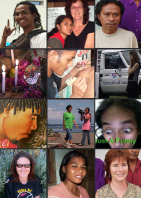The website reflects the multi-lingual experience of visiting East Timor. You will find translations for some and not others! Language lessons – You can learn Tetun through classes at the Melbourne East Timor Activities Centre in Richmond, you can find out more from Australia East Timor Association.
The language of Suai-Covalima is Tetun Terik. Tetun Terik is the classic Tetun spoken in many parts of both East Timor and West Timor (the District of Belu) that is part of Indonesia. Belu or Belun is the Tetun Terik word for friend. In spite of centuries of colonial occupation by Portugal, Holland (the Netherlands), Japan and Australia (both during the World War II), and then Indonesia, the Timorese, against all odds, speak and maintain their own traditional languages. There are 36 local languages, which are totally different from each other.
Suai is the abbreviation of Tetum Terik words: Su Rai Henek, which means digging the sand. As time elapsed the pronunciation of Su Rai evolved into Suai which has lost its real meaning or become meaningless. Covalima means five baskets. But it’s politically symbolic meaning is ‘five kingdoms’ – a coalition of five kingdoms. More about this …
The traditional Timorese love their land. Timorese are very much attached to their land. Land is the very essence of their identity and of their existence. Land was and still is to a great extent seen as the mother who nurses the people, and to whom they are grateful. Land was not and is not seen as a commercial resource or commodity to be exploited. Land was and is seen as being sacred – sacred land (rai lulik), together with sacred water, sacred forests, sacred trees, sacred mountains, sacred stone, sacred lakes and so on. The spiritual attachment to their land does not engender any desire to leave it. It was colonisation, the forced dispossession of land and violence that forced people to move from their traditional land that uprooted them. During colonisation by foreign powers, one after another many people were uprooted and displaced. In Suai for example there are people from different parts of the district of Covalima. This movement was accelerated during the Indonesian occupation. For example people from Fatumea moved to Suai and occupied a part of Suai called Asu Maten. Land is community-owned. Private ownership is a foreign concept. It is against the communal spirit and the attachment towards their land. The emphasis on I, me, my and mine is seen as arrogant, selfish and impolite. Therefore, one often hears used, the inclusive and plural first pronouns: we and ours (our land, our forest, our water, our house, our children, etc).
While the national language of East Timor is Tetun, the official language is Portuguese. The Government declared the official name of East Timor as Timor Leste (Portuguese). The Tetum words for East Timor are Timor Loro Sae, which means Timor of the Rising Sun (East Timor) in contrast to Timor Loro Toba or Timor Loro Monu (Timor of the Setting or Sleeping Sun), which means West Timor. Timor Lora Toba/Monu was Timor Hollandaise, (Dutch Timor), until 1949, when it became a part of the Republic of Indonesia.
People educated under the Portuguese in East Timor are usually fluent in Portuguese and if they have lived in Timor since 1975 they are often fluent in Indonesian also. However, the majority of the young people educated during the Indonesian occupation do not speak Portuguese. In addition to Tetum Dili as the national language, Indonesian, Portuguese and English, almost every Timorese speaks his/her own mother tongue, such as Tetum Terik, Bunak, Dawan, Makasae, Mambae, Kemak, Fataluku, Makalero, Haka, Uai-ma’a, and others. The Timorese of Chinese origins speak Haka as their mother tongue. So there are 40 different languages spoken in East Timor (whose population as of 2008 is less than one million), 36 native languages plus Portuguese, Haka, Indonesian and English.
Many people see the use of Tetum as critical to maintaining their cultural identity. They are resisting the renewal of Portuguese language in the country. It is common to see graffiti to this effect. This is being counter-balanced by the use of Portuguese in schools and official documents. In Dili, the capital, a combination of Indonesian, Portuguese and Tetum plus English is the lingua franca.
The confusion about spelling even extends to the name of the language – some argue for Tetun others for Tetum. Tetun is the real name of the language. Tetum is the Portuguese spelling of Tetun. The letter M at the end of the word in Portuguese is pronounced N. This language complexity makes it difficult even to get consistency in spellings. Rather than spend overdue amounts of time on this issue, we will use Tetun wherever possible as a tiny contribution to efforts in maintaining Timorese identity. Indonesian, English and Portuguese contributions to Suai Media Space are welcome and spellings will vary according to writers’ habits. English is becoming more common in East Timor and many Australians working there are learning Tetun. And this is a kind of a cultural dialogue that is culturally enriching for both sides.
Written by Balthasar Kehi










